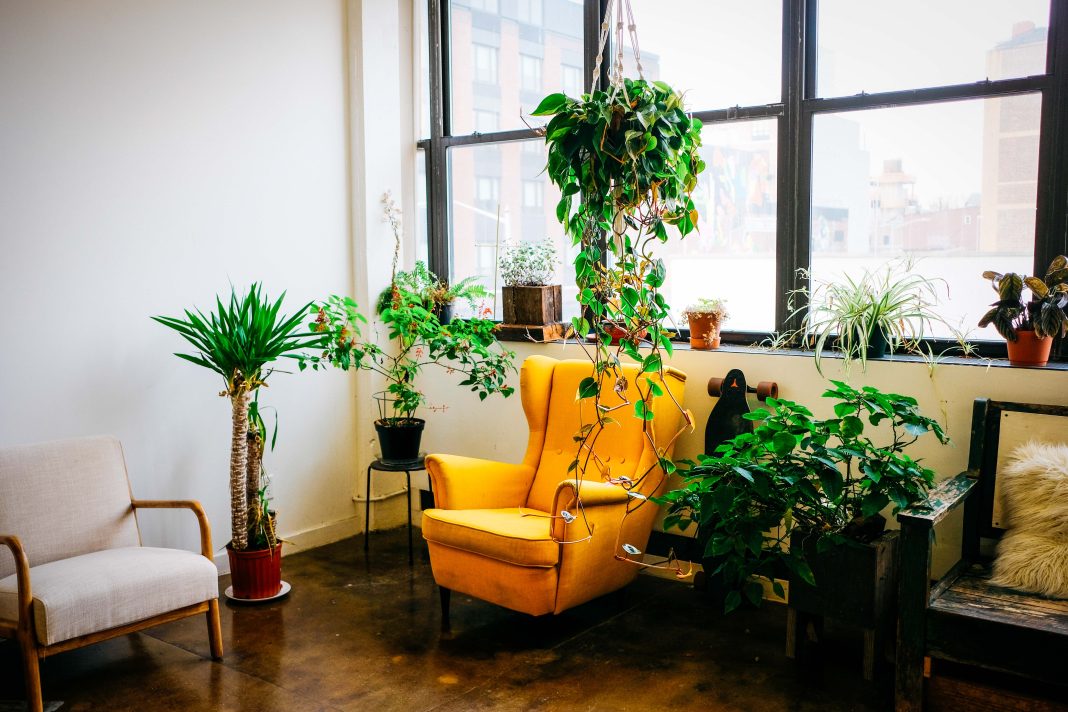There’s more to indoor plants than just succulents. With the following simple ways, you can enrichen your plain rooms with a little bit of nature. Whether a simple plant in a pot, or a more ambitious project of green walling, here are the ways to do it, advice to keep in mind, and recommended types of plants to use.
Why Indoor Plants
There are many reasons why we encourage everyone to green their homes. According to WebMD, some of the benefits of home plants include:
Allergies Reduction
Rooms with plants tend to have less dust and mould as leaves act as natural filters, removing irritable particles in the air.
Air Moisturising
Indoor plants add moisture to the room, reducing the risk of catching a cold and of skin irritation caused by drier air.
Air Purifying
Not only do the plants moisturise the air, but they also purify it. Houseplants soak up pollutants that can build up in the air and cause eye and skin irritation or worsen a preconditioned asthmatic state. In fact, they can remove up to 87% of air toxins in 24 hours, NASA found out.
Better Sleep
Plants turn carbon dioxide into oxygen. Some (e.g. orchids, succulents, snake plants, bromeliads) emit oxygen even at night – if placed in the bedroom, they can improve the quality of sleep.
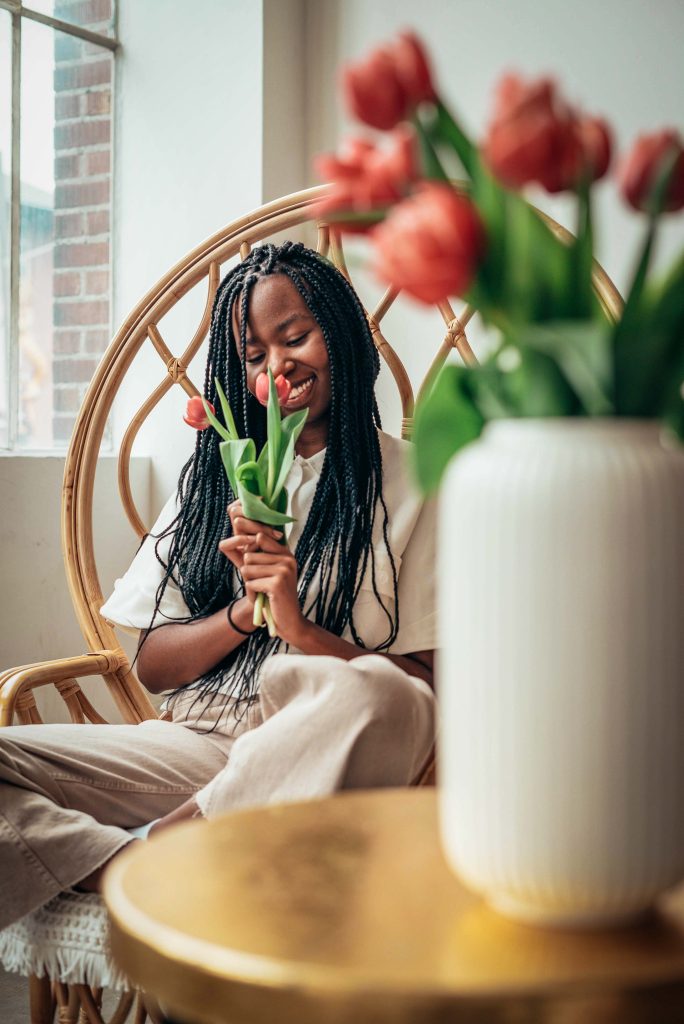
Better Recovery
When surrounded by greenery, patients heal faster, tolerate pain better, and need fewer medications.
Mood-Boosting
Working in a space with plants lifts anyone’s mood. Employees feel better about their jobs, they worry less, and usually take fewer sick days. Plants make it easier to concentrate and strengthen memory. NBC News reports that indoor plants reduce stress levels, boost the mood, and improve concentration and productivity by up to 15%.
Improved Psychological State
Some therapists use gardening as a tool to help treat depression, schizophrenia, and other conditions as taking care of plants lowers anxiety and reduces depression and dementia impacts.
How to Implement Greenery in Your Home
Creating indoor greenery is easy, and there’s no set way of doing it. It doesn’t have to be anything fancy. A few plants in a pot will do. However, if you want something more out-of-the-box, unique, and visually pleasing, here are some ideas:
1. Potted Plants
Potted plants are a very straightforward way of adding some greenery to your home. You can already buy pre-potted ones, or if you want to be involved with the process from the start, grow your own. You just need to choose a pot with one or more holes at the bottom, buy proper growing soil, and buy seeds or a baby version of the plant.
To avoid premature death of the plant, keep these factors in mind:
Don’t Overwater
Too much water suffocates the roots and causes fungus to develop in the soil. If your plant has yellow, droopy leaves, it’s an indicator you’re overdoing it. But, if you are still scared of dehydrating the plant, a viable solution could be acquiring a pot with more holes at the bottom, allowing the excess water to leave the soil.
Proper Placement
Find a sunny or shady spot, depending on the needs of your plant. Sure, your plant might look better on the window seal, but the livelihood of the plant comes first. Wouldn’t you rather have a healthy, green one in the shadowy corner of the room, than a brown, dying one on the window seal? It’s important to do your research on how much sunlight (direct or indirect) your plant requires and observe the plant – move it around and find that ‘sweet spot’ where it suits it best.
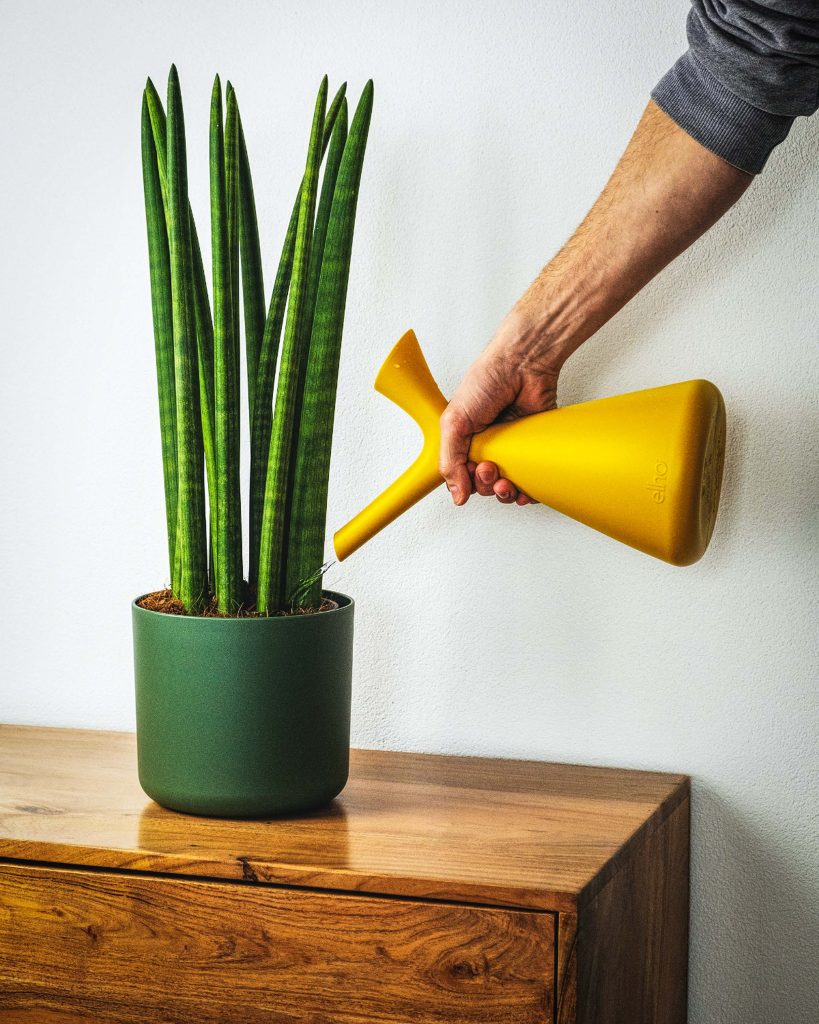
Lack of Fertiliser
Fertilising is what keeps the indoor plants healthy and happy, as they have no other way of getting the needed nutrients. But hold on, too much fertilising can also hurt them – fertilisers contain salt, which makes it difficult for water to reach the roots.
Air Quality
Not enough air circulation enables pests and fungi to attack your plant while lack of humidity dries out its leaves.
Dust on Plants
Every once in a while, it’s good to give a quick once-over with a cloth on the plants’ leaves. Dust collecting on the leaves restricts the absorption of light for the plant.
Winter is Coming
If you live in a cold environment, make sure you’re not exposing your plants to draughts and that the leaves are not touching cold windows; however, don’t place them near fireplaces, radiators, or heat vents either as they reduce their humidity.
Low-Maintenance Plants
You don’t have to have a green thumb to successfully grow healthy, strong plants. If you are a beginner, we recommend starting off by choosing less demanding ones. To help you out, NBC News has some suggestions:

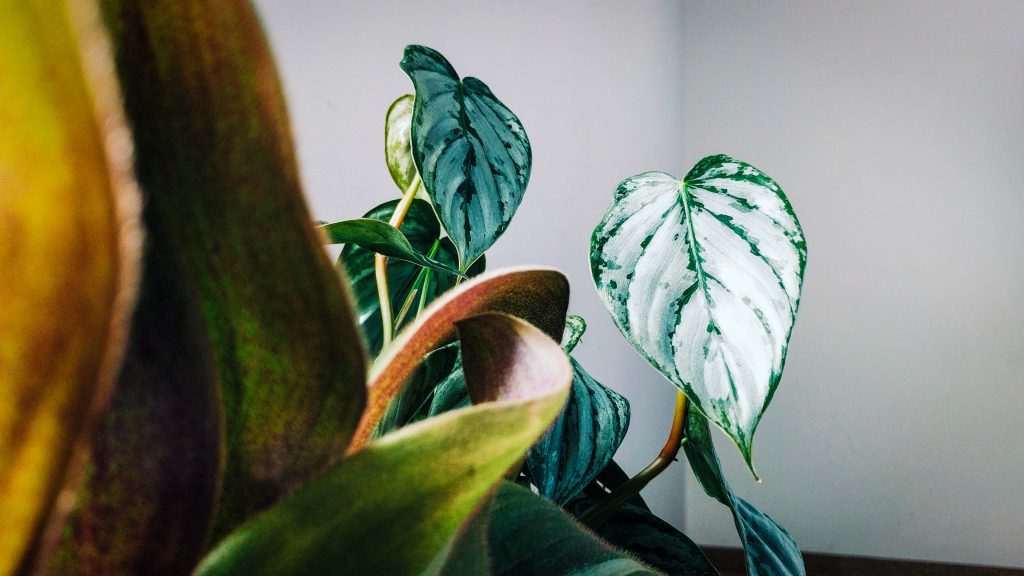
2. Indoor Atrium
Atriums are spaces within the buildings, surrounded by walls or columns. They can be open-air or covered with a glass ceiling. But more than that, they offer a way of bringing nature indoors. Introducing some greenery into the atrium is easy – you just need to bring in plants.
Some of the plants that work well, depending on the condition of the atrium, are:

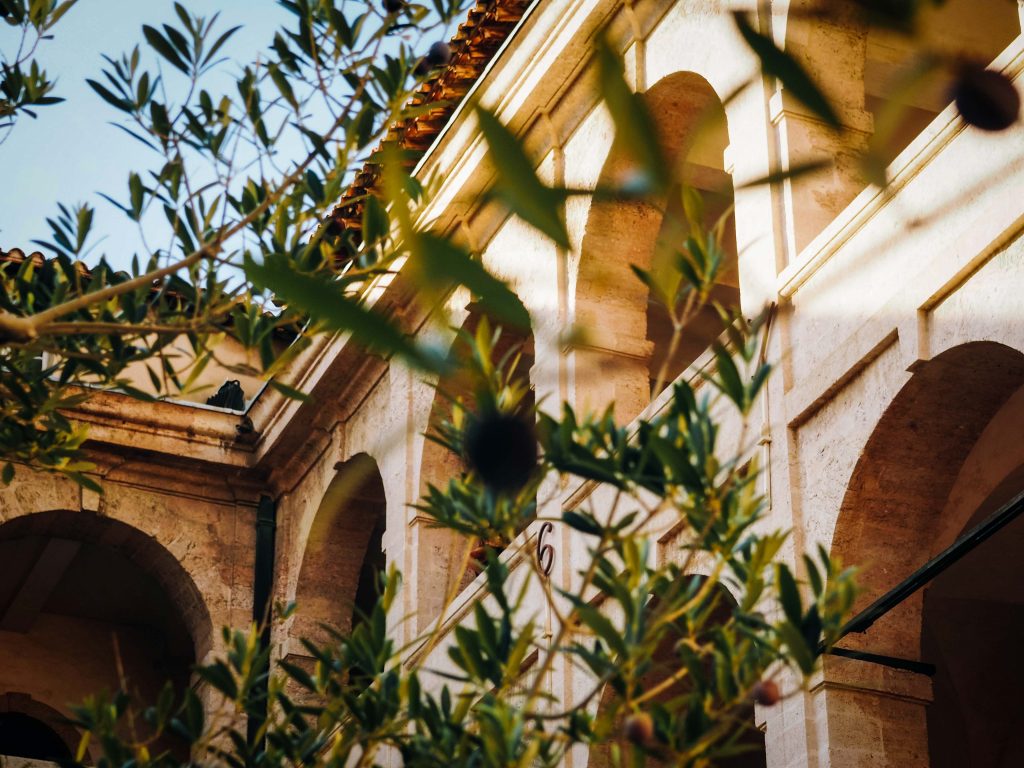
3. Herb Garden
Who wouldn’t like a small garden in their house with aesthetically pleasing, nice-smelling and good-tasting plants? If you’re both a culinary fan and an (aspiring) gardener, a herb garden is exactly what you need. Here is how to set it up, according to The Culinary Herb Garden:
Take Care of Lighting
The more access to light the herbs have, the tastier they are. They prefer 6–8 hours of direct sunlight, preferably next to a south-facing window.
Temperature Matters
The ideal temperature for healthy herbs is between 18 and 21°C. If kept on a windowsill, make sure their leaves are not touching the window as the heated glass from the sun can burn them, and in case of a draught, they get too cold.
Location
Set up your herbs where the air circulation is good and keep a little distance between each pot – if they are too close together, they don’t receive enough airflow and diseases evolve. Also, don’t let the air become stagnant, so rearrange them occasionally.
Watering
Don’t overwater them. Allow the soil to dry up a little in between watering. Two or three times a week is enough. Water them slowly, so that the soil has a chance to properly absorb it.
Pots
Plant each herb in a separate pot, so that you can give each type the proper attention. Choose a size and material that appeals to their varieties – e.g., Basil has longer roots, so it’s ideal to have a deeper pot. But whatever you choose, make sure the pots have enough holes for proper drainage – herbs hate standing water.
Potting Mix
Soil needs to allow the water to drain. If possible, choose a potting mix instead of a potting soil as mixes are lighter and allow the roots to breathe.
Fertilising
The best fertilisers for herbs are seaweed extract and fish emulsion, which with their high level of nitrogen help leaves grow strong. During summer when the growth is active, fertilise once a week, otherwise once a month.
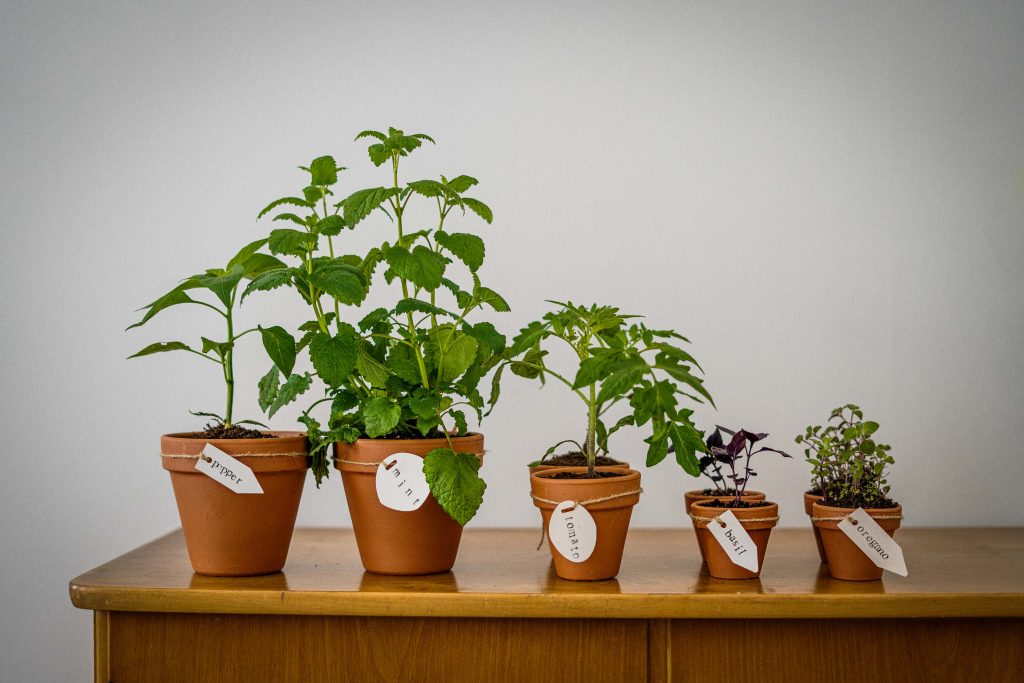
Some of the possible herbs are:

4. Wall Planters
“A wall planter is a small container, typically the size of a flowerpot, that is mounted or hung on a wall,” reports Urban Vine Co.
Their instalments vary, from pots and wall frames. It’s really up to the imagination. And although they can contain fake plants, real ones are a more authentic option to spruce up your walls.
To fill in the pots, you can choose between varieties of succulents, herbs, or some of these green plants:

5. Green Walls
Although most commonly known as an outdoor thing, green walls can also be installed inside. The process is almost the same: choose a spot and a medium (keep in mind the light flow for the chosen wall), decide on an irrigation system, or water the plants yourself (usually, every 7 days; best to spray it at the soil to avoid dripping). The difference is only in the plants’ selection. Here are some examples to choose from:
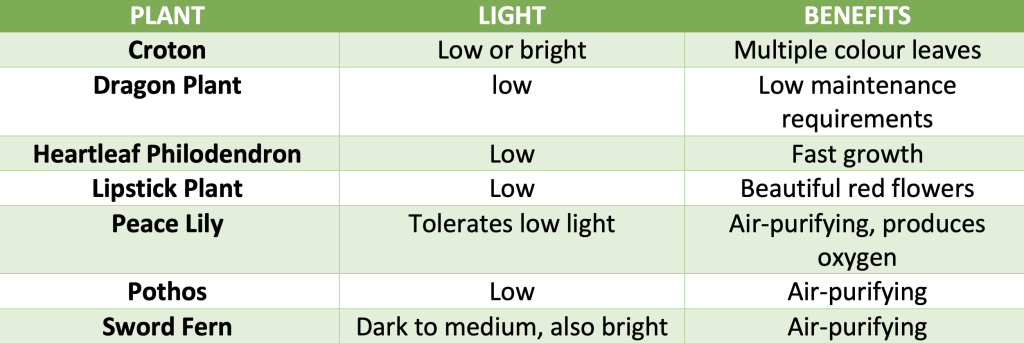

One example of an indoor green wall is Google’s office in Pyrmont, Australia. Its aim was to “turn an information desk into an oasis of green in the heart of an inner city office block.”

To Recap
Indoor plants provide many benefits and help our physical and mental well-being. There are many ways to incorporate them into a room. In this article, we have presented potted plants, indoor atriums, herb gardens, wall planters, and green walls. The main thing is to do your research when deciding on types of plants (we suggest starting with low-maintenance ones), water each type accordingly, choose a spot that suits the plants the most, and take care of the lighting – this way, your plants will grow to be healthy, beautiful, and will definitely freshen up your home.

